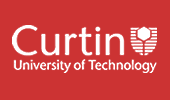| Area: |
Division of Resources and Environment |
| Credits: |
25.0 |
| Contact Hours: |
3.0 |
| |
| ** The tuition pattern below provides details of the types of classes and their duration. This is to be used as a guide only. For more precise information please check your unit outline. ** |
| |
| Tutorial: |
2 x 3 Hours Quarterly |
| |
| Syllabus: |
A principal challenge for sustainable technology development is the design of new products that have increased benefits, but without detrimental effects on the environment. Green chemistry - or pollution prevention at the molecular level - is aimed at innovative chemical products and processes that reduce or eliminate the use and generation of hazardous substances in the design, manufacture and use of chemical products. Outlines the basic concepts of green chemistry, looking at the role of catalysts and solvents, waste minimisation, feedstocks, and green metrics, and the design of safer, more-efficient processes. The concepts are being illustrated with practical examples from various industry sectors. Special emphasis is given to the application of nano-chemistry and nano-technology. |
| |
| ** To ensure that the most up-to-date information about unit references, texts and outcomes appears, they will be provided in your unit outline prior to commencement. ** |
| |
| Field of Education: | 010599 Chemical Sciences not elsewhere classified |
| Funding Cluster: | 08 - Engineering, Science, Surveying |
| SOLT (Online) Definitions*: | Informational
*Extent to which this unit or thesis utilises online information |
| Result Type: | Grade/Mark |
Availability |
| Availability Information has not been provided by the respective School or Area. Prospective students should contact the School or Area listed above for further information. |


